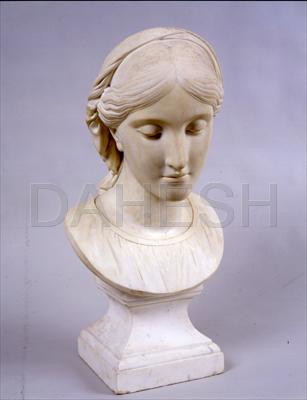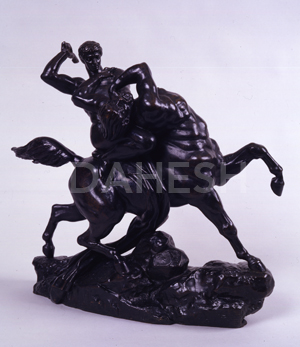- About
- Visit
- Exhibitions
- Collection
- Overview
- Search the Collection
- Recent Acquisitions
- SPOTLIGHT ON …
- Bouguereau’s “Amiable” Pictures Cross the Atlantic
- Back to Work
- The Allure of Animals in Academic Art
- Classical Mythology in 19th-century French Art
- Celebrities: Portrait medals in 19th-Century France
- Oriental “Native Types” from the Dahesh Collection
- Recording Islamic Architecture and Design
- French Natural Selections
- Painting Piety from the Dahesh Collection
- About Face: Learning to Draw Emotion through Expressive Heads
- From St. Petersburg to Paris: The Education of Russian Artists in France
- Picturing the News: The Birth of the Illustrated Press
- Egyptomania: 19th Century Depictions of Ancient Egypt
- The Franco-Prussian War and Its Aftermath in French Art
- Painting Pompeii: From Neoclassicism to the Néo-Grecs
- The Spanish Orient and Henri Regnault (French, 1843–1871)
- Women Artists Who Dared II: Jeanne Thil (French, 1887–1968) and Marie Hadad (Lebanese, 1889–1973)
- Women Artists Who Dared I: Rosa Bonheur (French, 1822–1899) and Elizabeth Gardner Bouguereau (American, 1837–1922)
- Peder Mork Mønsted’s (Danish, 1859–1941) Poetic Views of Nature
- Publications
- Programs
- Shop
- News
Search Results for: ‘bosio’
-
François-Joseph Bosio, The Virgin Mary
François-Joseph Bosio (French, 1768–1845)
The Virgin Mary, 1843
Marble, 22 7/16 x 12 x 11 1/2 in.
2001.6 a, b
Bosio’s sculpture exemplifies the neoclassical approach to religious subjects. The Virgin has the perfectly finished and idealized proportions of a Greek goddess, but her headscarf and covered chest, humble, downcast eyes, and serene expression suggest her holy identity. Bosio kept this sculpture in his studio until his death, but exhibited a slightly different variant of it at the Paris Salon of 1843 (Paris, Musée du Louvre).
Nicknamed both the “French Canova” and the “Ingres of sculpture” for his cool, disciplined style, Bosio became a professor at the École des Beaux-Arts in 1817. He was appointed First Sculptor to King Louis XVIII (reigned 1814–24), and was made a baron by Charles X (reigned 1824–30). King Louis-Philippe (reigned 1830-48) stripped Bosio of these titles but still recognized him as France’s premier neoclassical sculptor, purchasing the Salon version of The Virgin Mary.
-
Antoine-Louis Barye, Theseus Combating the Centaur Bianor
Antoine-Louis Barye (French, 1796–1875)
Theseus Combating the Centaur Bianor, modeled ca. 1850
Bronze, 16 1/4 x 6 1/2 x 16 in.
Signed on base bottom left: BARYE
1995.110
Barye is best known for his more Romantic bronzes of animals, but as a student of the Neoclassical sculptor François-Joseph Bosio (1768–1845), he received a thorough grounding in the classical tradition. Ovid recounts the Battle of the Lapiths and the Centaurs in his Metamorphoses. Book XII describes how Theseus, ruler of Athens, helped the king of the Lapiths by violently slaying the centaur Bianor.
Barye exhibited a large plaster of Theseus Combating the Centaur Bianor at the Salon of 1850, after which bronzes in various sizes were cast. Barye must have been aware of the metopes from the Parthenon depicting the Greek legend, but this specific modeling of the death blow delivered by the Greek hero was clearly borrowed from the marble Hercules Slaying a Centaur (1595–1600, Loggia dei Lanzi, Florence) by the Mannerist sculptor Giovanni Bologna (1529–1608). Around 1846–48, Barye had already made an initial sketch of the same. The versions differ substantially, resulting in the less horizontally-oriented composition of this later variant from 1850. The rock formation beneath the horse is slightly higher, the centaur’s upper torso leans further back, and its left front leg is more contracted. The tip of the tail is curled inwards, and the centaur’s hair flows differently than in the earlier sketch. In all, these changes give the later work a greater sense of agony and better express the fierceness of the battle.
-
Antoine-Louis Barye, Theseus Combating the Centaur Bianor (sketch)
Antoine-Louis Barye (French, 1796–1875)
Theseus Combating the Centaur Bianor (sketch), modeled ca. 1846–48
Bronze, 13 1/2 x 6 x 14 in.
Signed on base bottom center: A. L. BARYE
1995.15
Barye is best known for his more Romantic bronzes of animals, but as a student of the Neoclassical sculptor François-Joseph Bosio (1768–1845), he received a thorough grounding in the classical tradition. Ovid recounts the Battle of the Lapiths and the Centaurs in his Metamorphoses. Book XII describes how Theseus, ruler of Athens, helped the king of the Lapiths by violently slaying the centaur Bianor.
Barye created two versions of this struggle between a man and centaur. This object is a bronze cast of his first variant, modeled around 1846–48, which was listed in his foundry catalogue of 1855 as a “sketch” for the monumental plaster that was exhibited at the Salon of 1850. The two versions of this work differ substantially, the changes implemented in the later work creating a more emotional and expressive composition.


